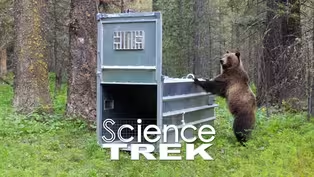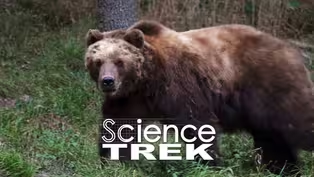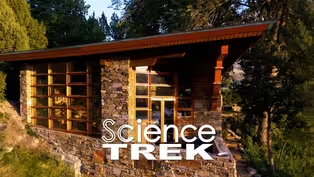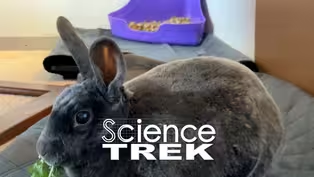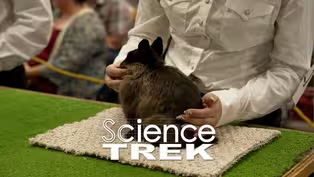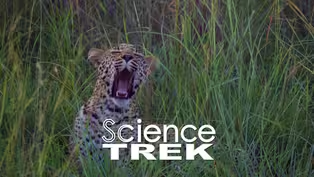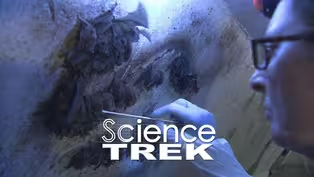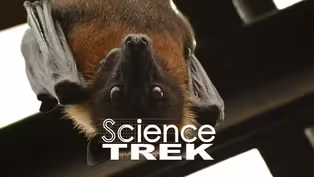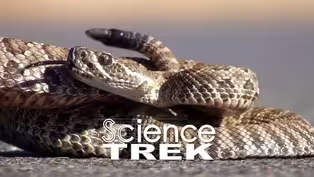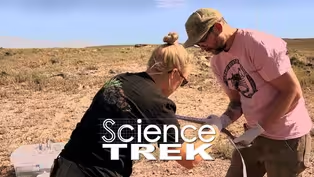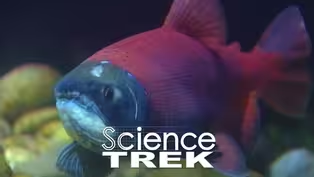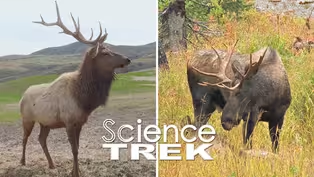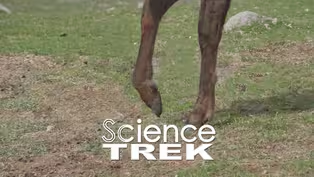
Elk: Elk Rancher
Special | 6m 38sVideo has Closed Captions
How does Elk meat taste?
Elk are wild creatures, but many people like to eat their meat. So, some ranchers have started raising Elk instead of cattle. What is it like to be an Elk Rancher?
Problems playing video? | Closed Captioning Feedback
Problems playing video? | Closed Captioning Feedback
Science Trek is a local public television program presented by IdahoPTV
Major Funding by the Laura Moore Cunningham Foundation and the Idaho National Laboratory. Additional Funding by Sparklight, the Friends of Idaho Public Television and the Corporation for Public Broadcasting.

Elk: Elk Rancher
Special | 6m 38sVideo has Closed Captions
Elk are wild creatures, but many people like to eat their meat. So, some ranchers have started raising Elk instead of cattle. What is it like to be an Elk Rancher?
Problems playing video? | Closed Captioning Feedback
How to Watch Science Trek
Science Trek is available to stream on pbs.org and the free PBS App, available on iPhone, Apple TV, Android TV, Android smartphones, Amazon Fire TV, Amazon Fire Tablet, Roku, Samsung Smart TV, and Vizio.
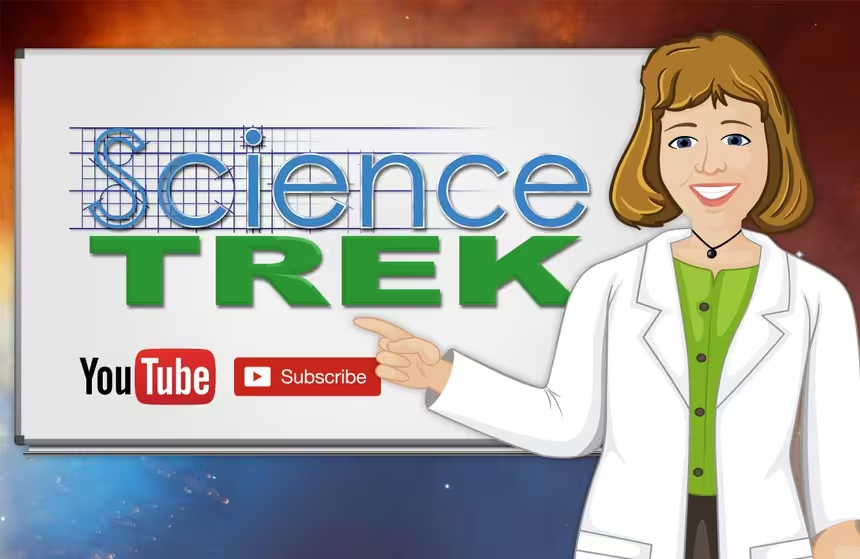
Science Trek
Science Trek is a place where parents, kids, and educators can watch short, educational videos on a variety of science topics. Every Monday Science Trek releases a new video that introduces children to math, science, technology, engineering, and math (STEM) career potentials in a fun, informative way.More from This Collection
Video has Closed Captions
Learn what bears like to eat and why you should avoid them. (6m 49s)
Bears: Grizzly, the Bear in a Coat
Video has Closed Captions
How are grizzly bears different from other bears? (5m 33s)
Video has Closed Captions
Architects borrow from nature all the time. Find out how. (6m 26s)
Rabbits: Are You Rabbit Ready?
Video has Closed Captions
What do you need to know before getting a rabbit for a pet. (5m 57s)
Video has Closed Captions
Showing rabbits at your local fair opens the door to science. (6m 30s)
Video has Closed Captions
What is White Nose Syndrome and why is it so deadly? (5m 15s)
Video has Closed Captions
How do bats find their food at night? (4m 17s)
Video has Closed Captions
Why do snakes always look like they are staring? (3m 43s)
Snakes: Snake Hunters for Science
Video has Closed Captions
How do you catch a rattlesnake? Very carefully. Watch! (7m 16s)
Fish: Idaho Fish Rule! Hopefully.
Video has Closed Captions
Learn about native Idaho fish and why non-native fish can be a problem. (5m 52s)
Providing Support for PBS.org
Learn Moreabout PBS online sponsorshipJoan Cartan-Hansen, Host: Elk are generally wild creatures.
But some elk are raised for food, just like cattle are.
Find out what it takes to be an elk rancher.
[MUSIC] Diana Molenaar, Timber Butte Elk Ranch: Good morning!
Welcome to Timber Butte Elk ranch.
I'm Diana.
Brooke: My name is Brooke.
Molenaar: Nice to meet you, Brooke.
Evie: My name's Evie.
Molenaar: Hi, Evie.
Nice to meet you too.
Thank you so much for coming up this morning.
It's great to see you guys.
So, these are our elk.
These are our juveniles.
These are three and four-year-olds.
Cartan-Hansen: These young male elk or bucks are kept in this first area.
Young bucks tend to be pretty pushy so it's better to keep them separate.
Especially when there are treats around.
Molenaar: See his upper lip?
There's nothing there.
No teeth.
Brooke: Only on the bottom?
Molenaar: Only on the bottom, because they eat grass.
So they only need the teeth to tear the grass off the ground.
Evie: What type of elk do you have here?
Molenaar: We have two.
So this guy's a Roosevelt.
They're coastal elk.
The other ones that are up here are Rocky mountain elk and that's what's native to Idaho.
Roosevelts are 30% bigger and you can see he's quite a bit bigger than some of the other guys.
So they have a bigger body, but their antlers only usually get to about six points.
The Rocky mountains don't have as big a body, but they spend a lot more energy with, they get wild antlers.
I mean, you know, and that's the antlers that are scored when hunters hunt are the ones that are Rocky on the Rocky mountain.
This is off of a four-year-old Rocky mountain elk.
That's a four-year-old Roosevelt elk.
Look at the difference in size.
Isn't that amazing feel how heavy that is.
Evie: Um, what are the antlers used for?
Molenaar: They can be used for a lot of different things.
We cut 'em up and sell them as dog chews, but sometimes people will make lamps out of 'em they'll make furniture out of 'em.
And you know, it's a renewable resource.
The animals drop 'em every year and we go pick 'em up.
So do you guys want to go down and see the mamas and babies?
Brooke: Sure.
Evie: Yes.
Molenaar: All right.
Cartan-Hansen: Mama cows and their babies are kept in their own area so the babies have a chance to grow.
Most of the babies in this pen are almost a year old.
Cow elk like to live in a group.
Molenaar: They're herd animals.
So they're more comfortable with a lot of 'em around, but um, all the mamas protect all the babies.
Brooke: Um, what do you feed them?
Molenaar: We feed 'em hay and we usually have to feed 'em about nine months out of the year.
Brooke: Do they eat anything besides hay and treats?
Molenaar: You know, they can eat.
We fed 'em bananas and grapes and watermelon, any sweet fruit like that they'll eat.
Brooke: How long are the mamas pregnant?
Molenaar: They're pregnant for nine months.
Just like a human and cows are pregnant for 60% of their life.
Can you imagine?
Cartan-Hansen: Diana and the girls head down to our next stop.
You can see the elk pens have very tall fences.
Molenaar: So with elk, you can see our fences are very tall.
They're eight feet tall because an elk can jump.
If they're not that tall, an elk could jump out.
We have to keep them contained because they're actually our property as opposed to the elk in the wild that belong to the state of Idaho and the people of Idaho.
So because these are ours, we keep 'em contained and if they were outside the fences, we'd never see them again.
But you can see that with the size of the pen, that they're not cramped at all.
They have plenty of room to run around and play, and we've got ponds in the summer.
They'll be down in the ponds to cool off.
We want to make sure that they have as much room as we can give them so they can run and play and act like a regular elk.
Cartan-Hansen: Most of the time, the elk live in their own areas relatively undisturbed.
But twice a year, the elk are herded in this building.
Molenaar: We have to handle.
'em a couple of times a year because we've got to vaccinate them.
And, and this is the facility that we do that in.
So we call it the handling facility.
So the elk come in, they'll come around and they go through these boxes.
And the name of the game is to keep everybody safe.
We don't want the animals to get hurt.
We don't want to get hurt, but we need to get 'em vaccinated.
They get an eight way to keep healthy.
They also get wormed twice a year because they eat off the ground.
They'll pick up parasites.
And if we don't get rid of those parasites, the animals will suffer.
And we don't want that.
Cartan-Hansen: Diana and her husband Jerry started raising elk in 2008.
There're about 44 elk ranches in Idaho.
Brooke: What do you use the elk for?
Molenaar: We use the elk for food.
We raise them for meat.
Elk meat is great for you.
It's low fat, low cholesterol and it's very high in protein.
It's extremely lean meat and it tastes really good.
You want to try some?
Brooke: Sure.
Evie: Sure.
Molenaar: Come on.
Cartan-Hansen: Timber Butte Ranch sells their elk meat products at local farmers markets and on-line.
Molenaar: So we make a jalapeno pepper jack cheese salami.
You want to try it?
Brooke: Is it spicy?
Molenaar: It's not really spicy.
It might be a little bit, but just take a piece and split it.
Students together: Okay.
Molenaar: So we do salami and pepperoni and jerky and huckleberry sausage.
And then we also have ground and steak.
Brooke: It's good.
Molenaar: Thank you.
Cartan-Hansen: If you want to learn more about elk, check out the science trek website.
You'll find it at science trek dot org.
[MUSIC] Science Trek on Idaho Public Television is made possible through the generous support of the Laura Moore Cunningham Foundation, committed to fulfilling the Moore and Bettis family legacy of building the great state of Idaho.
By the Idaho National Laboratory, mentoring talent and finding solutions for energy and security challenges, by The Friends of Idaho Public Television and by the Corporation for Public Broadcasting.
Video has Closed Captions
Clip: Special | 1m 4s | Is that a moose or an elk? Depends where you live. (1m 4s)
Video has Closed Captions
Clip: Special | 1m 4s | Can you run on tiptoes? Elk do. (1m 4s)
Providing Support for PBS.org
Learn Moreabout PBS online sponsorship
- Science and Nature

Explore scientific discoveries on television's most acclaimed science documentary series.

- Science and Nature

Capturing the splendor of the natural world, from the African plains to the Antarctic ice.












Support for PBS provided by:
Science Trek is a local public television program presented by IdahoPTV
Major Funding by the Laura Moore Cunningham Foundation and the Idaho National Laboratory. Additional Funding by Sparklight, the Friends of Idaho Public Television and the Corporation for Public Broadcasting.
